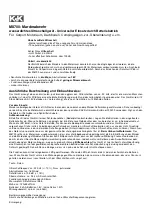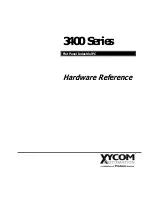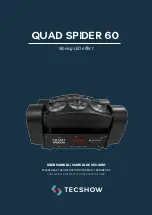
Standard Economizers
1-8
Part No. 750-266
While the exchanger is in a clean, like-new condition, note and record the following:
• Liquid inlet and outlet temperatures
• Exhaust gas inlet and outlet temperatures
• Pressure gauge reading (if applicable)
This information will provide a point of reference in the event of a future fouling condition.
1.5-MONITORING PERFORMANCE
It is recommended to inspect the core or coil if the performance (liquid temperatures leaving and Btu/
hr. recovery) begins to decrease. A good practice of maintenance is to keep a performance schedule
starting when the economizer is installed to compare with any future changes.
A simple method of determining whether the heat exchanger is performing properly is to monitor the
exit temperatures on the liquid and gas sides while in the new condition to establish a base of
comparable data. If the stack temperature leaving the exchanger is higher than normal and the liquid
exit temperature is lower than normal, then either the heat transfer surface is probably fouled or scaled
on the inside of the tubing. This requires cleaning as soon as possible during a convenient shut down
period.
In a circulating system containing a pump and BTU storage tank, if the economizer pressure relief valve
discharges, it is likely that there is no or little liquid circulating through the economizer. Check the
pump operation and repair or replace as necessary. DO NOT ATTEMPT TO REMOVE OR REPLACE
THE PUMP UNLESS THE PUMP, PIPES AND LIQUID HAVE BEEN ALLOWED TO COOL. You may also
need to check for flow restrictions in the piping and/or the economizer.
If the economizer liquid and outlet temperatures are approaching being equal, this may be a pump
problem and/or a scale accumulation in the finned tubing. Remedy as indicated above. It is also
possible that the fin coils are severely fouled. Refer to section 1.7 for cleaning.
1.6-MAINTENANCE
As stated in the General Description, the economizers are "mechanically maintenance free", but of
course, when ancillary control equipment is added to an exchanger, such as timed automatic
sootblowers, damper controls, etc., then those components will require periodic maintenance
consistent with normal operation (Refer to appropriate control equipment detail and specific owners
manual as applicable).
A routine physical inspection of the heat transfer core area will be dependent on the conditions of
temperature and the quality of combustion within the flue gas stream.
NOTE:
Ensure that the
Bypass damper CRE
Bypass damper CCE Manual Damper Adjustment
Содержание C1X Series
Страница 1: ...Economizers 750 266 1 15 CRE CCE C2X C1X Operation Manual...
Страница 2: ......
Страница 6: ...vi NOTES...
Страница 20: ...Standard Economizers 1 14 Part No 750 266 Figure 1 7 Piping with circulating tank BOILER...
Страница 29: ...Condensing Economizers Part No 750 266 2 9 Figure 2 7 Dimension diagram C2X BB...
Страница 33: ...Condensing Economizers Part No 750 266 2 13 Figure 2 9 Single boiler with deaerator...
Страница 34: ...Condensing Economizers 2 14 Part No 750 266 NOTES to Figure 2 9 CONTACT LOCAL CB REPRESENTATIVE IZING...
Страница 36: ...Condensing Economizers 2 16 Part No 750 266 Figure 2 10 Single boiler with deaerator and surge tank...
Страница 38: ...Condensing Economizers 2 18 Part No 750 266 2 4 3 Two boilers with deaerator refer to Figure 2 11...
Страница 39: ...Condensing Economizers Part No 750 266 2 19 Figure 2 11 Two boilers with deaerator...
Страница 40: ...Condensing Economizers 2 20 Part No 750 266 NOTES to Figure 2 11 CONTACT LOCAL CB REPRESENTATIVE IZING...
Страница 42: ...Condensing Economizers 2 22 Part No 750 266 Figure 2 12 Two boilers with deaerator and surge tank...
Страница 51: ...Condensing Economizers Part No 750 266 2 31...
Страница 52: ...e mail info cleaverbrooks com Web Address http www cleaverbrooks com...















































